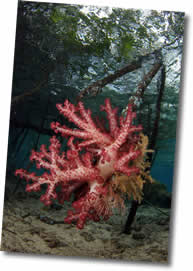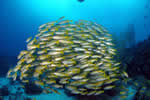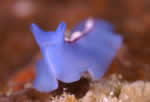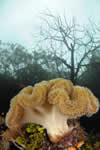Raja Ampat
The pinnacle of worldwide marine biodiversity
 Overview
Overview
The Raja Ampat region of Indonesia holds the undisputed record for marine biodiversity: there is simply nowhere else on the planet that offers as much marine life. The region is also one of the most beautiful above water, comprising hundreds of islands carved by the elements into fanciful pinnacles covered by lush vegetation.
"I was like a five-year-old, seeing a reef for the very first time. I was awestruck, held by the incredible power of this richest reef. We must, with all available resources, preserve the beauty of Raja Ampat. This may be the last frontier."
Michael Aw, Asian Geographic
This cradle of life must be seen to be believed, and as a result has become one of the world's most iconic eco-tourism destinations. Despite its recent notoriety, Raja Ampat is well-protected and remains a pristine gem visited by relatively few divers.
Geography
Located off the northwest tip of the island of New Guinea, Raja Ampat (meaning Four Kings) is an archipelago comprising over 1500 small islands, cays and shoals surrounding the four main islands of Misool, Salawati, Batanta, and Waigeo. It encompasses more than 9.8 million acres (40,000 km²) of land and sea. The primary travel hub in the region is the city of Sorong.
Apex of Marine Biodiversity
Twenty years ago, Raja Ampat meant nothing to divers. Its smattering of uninhabited islands lay off the beaten path and dive operators thought they had already found the best diving in regions such as Komodo, Lembeh, and elsewhere. In the early 1990s the first few divers began to explore the region seriously...they were greeted by an explosion of marine life unlike anything they had ever seen.



Raja Ampat is now known as the epicenter of marine biodiversity. Unlike other regions' similar claims, Raja Ampat's reputation is backed up with proof in the form of several scientific studies and fish counts.
Before 2001, ichthyologist Dr. Gerald Allen's single-dive fish sighting record was an impressive 204 species, set in Milne Bay, Papua New Guinea. However, in that year, during an exploratory trip to Raja Ampat Dr. Allen discovered an astonishing 283 species at Cape Kri. Not to be outdone, Allen returned with The Nature Conservancy for a more thorough expedition in 2002. On this trip, near the island of Kofiau, Allen set a new personal record of 284 fish species on a single dive...that's roughly one species every five seconds!



A concurrent assessment by Conservation International recently reported that the diversity of marine life in Raja Ampat is considerably greater than in all other areas of the so-called Coral Triangle of Indonesia, the Philippines, and Papua New Guinea. Over 1,070 fish species, 537 coral species (75% of all known corals!), and 699 mollusc species are known to inhabit Raja Ampat's waters!
In addition to pure species diversity, Raja Ampat boasts a wide variety of underwater habitats. Apart from conventional reefs, walls, and caves, one of the region's signature dive experiences is the blue water mangrove. Here, in water just a few feet deep, live vibrant stands of soft coral covered with fishes and invertebrates.
Travel Tips
Sorong may be reached by air from international hubs including Jakarta and Singapore via intermediate hubs such as Makassar and Manado. Our travel booking agent Reef & Rainforest can help you arrange your flight and hotel details.
More Information
To learn more about the research and conservation initiatives underway in the Raja Ampat region, visit the Coral Reef Alliance.

